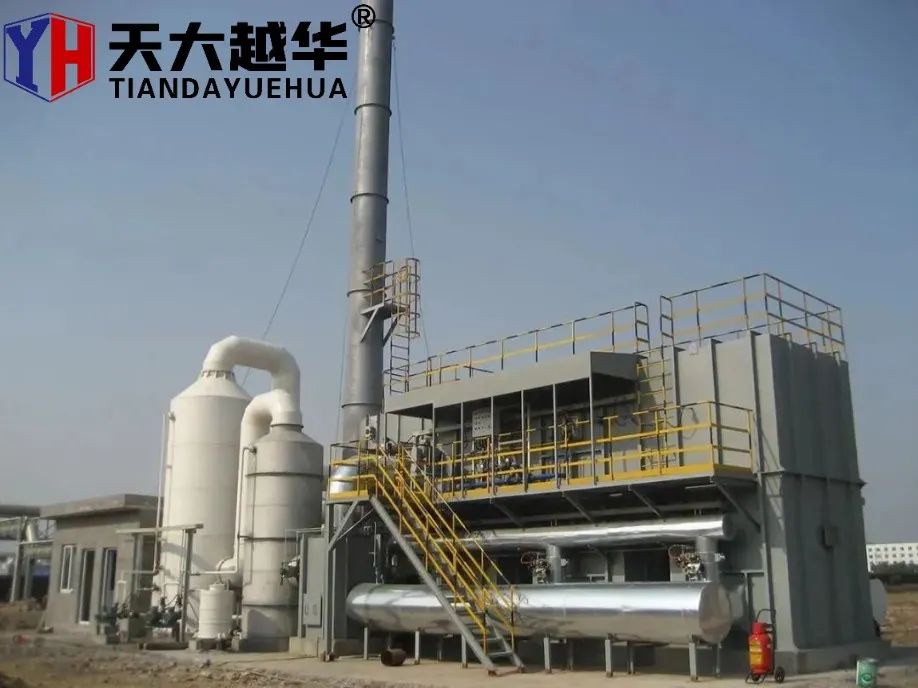Harnessing Efficiency: The Design Elements Driving Heat Recovery and Energy Efficiency in Oxidizer Incinerator RTOs
2024-04-08
In the realm of industrial pollution control, Oxidizer Incinerator Regenerative Thermal Oxidizers (RTOs) stand as pioneers of efficiency, championing the dual goals of pollutant removal and energy conservation. At the heart of their success lies a meticulously crafted design that maximizes heat recovery and energy efficiency. In this blog, we'll explore how the design of Oxidizer Incinerator RTOs contributes to these crucial objectives, paving the way for sustainable industrial practices.
Understanding Oxidizer Incinerator RTOs
Oxidizer Incinerator RTOs are sophisticated air pollution control devices designed to neutralize volatile organic compounds (VOCs) and hazardous air pollutants (HAPs) emitted during industrial processes. These systems utilize high temperatures within a combustion chamber to oxidize pollutants, converting them into harmless byproducts. What sets RTOs apart is their regenerative heat exchange technology, which allows for the recovery and recycling of heat generated during the combustion process, enhancing energy efficiency.
Key Design Elements Driving Efficiency
1. Regenerative Heat Exchange Beds: At the core of Oxidizer Incinerator RTOs are regenerative heat exchange beds, typically filled with ceramic media. During operation, hot exhaust gases pass through one bed, transferring heat to the media and preheating incoming process air. The flow of gases is periodically reversed, allowing the stored heat to be recovered and reused in the combustion process. This regenerative process maximizes energy efficiency by minimizing heat loss and reducing the energy required to maintain combustion temperatures.
2. Counterflow Configuration: RTOs are typically designed with a counterflow configuration, where exhaust gases and process air flow in opposite directions through the regenerative heat exchange beds. This design optimizes heat transfer efficiency by ensuring maximum contact between the hot exhaust gases and the ceramic media, facilitating efficient heat exchange and recovery.
3. Insulation and Sealing: Effective insulation and sealing are crucial aspects of RTO design that minimize heat loss and enhance energy efficiency. RTOs are equipped with high-quality insulation materials and seals to contain heat within the combustion chamber and prevent leakage of exhaust gases. This insulation ensures that the recovered heat is retained within the system, maximizing its utilization for preheating incoming process air.
4. Flow Distribution and Uniformity: Proper flow distribution and uniformity within the combustion chamber are essential for optimizing heat transfer and ensuring consistent performance across the regenerative heat exchange beds. RTOs are equipped with carefully designed flow distribution systems, including baffles, diffusers, and flow control devices, to achieve uniform gas flow and maximize heat recovery efficiency.
Benefits of Efficient Design
The design elements incorporated into Oxidizer Incinerator RTOs result in several key benefits for industrial facilities:
- Energy Efficiency: By recovering and recycling heat, RTOs minimize energy consumption and reduce operational costs, making them environmentally and economically sustainable solutions for air pollution control.
- Pollution Control Efficiency: The efficient design of RTOs ensures thorough oxidation of pollutants, leading to high destruction efficiency rates and compliance with regulatory standards for emissions control.
- Cost Savings: The energy-saving features of RTOs translate into significant cost savings over the operational lifespan of the equipment, offering a favorable return on investment for industrial facilities.
Conclusion
In conclusion, the design of Oxidizer Incinerator RTOs plays a pivotal role in driving heat recovery and energy efficiency, making them indispensable tools for sustainable industrial practices. Through regenerative heat exchange technology, counterflow configuration, effective insulation and sealing, and optimized flow distribution, RTOs maximize the utilization of heat generated during the combustion process, minimizing energy consumption and pollutant emissions. By harnessing the efficiency of RTO design, industrial facilities can achieve their pollution control objectives while realizing cost savings and promoting environmental stewardship.



